It’s often a long and fairly traumatic route back to riding after a serious injury, with time and money thrown at rehab and gym passes. After a major knee injury, physiotherapist Anne discovered that E-MTBs can serve as a winning rehab method. Here’s her story.
Everything clicks and whirrs around me; it sounds like I’m in the middle of a construction site, but I’m not. I’m strapped down for a MRI. Fifteen minutes to wait. The radiologist looks on with enthusiasm, flicking through the high definition images of my somewhat demolished knee on the screen: “Yep, you’ve caused some real damage here,” he says.
As a physiotherapist I knew exactly what was implied, and that instead of bearing a name of a peak or being measured in the metres I’ve climbed, my next challenge was going to involve surgery and intensive rehab. Recovery looked like it’d take a while, but I knew I’d get there.
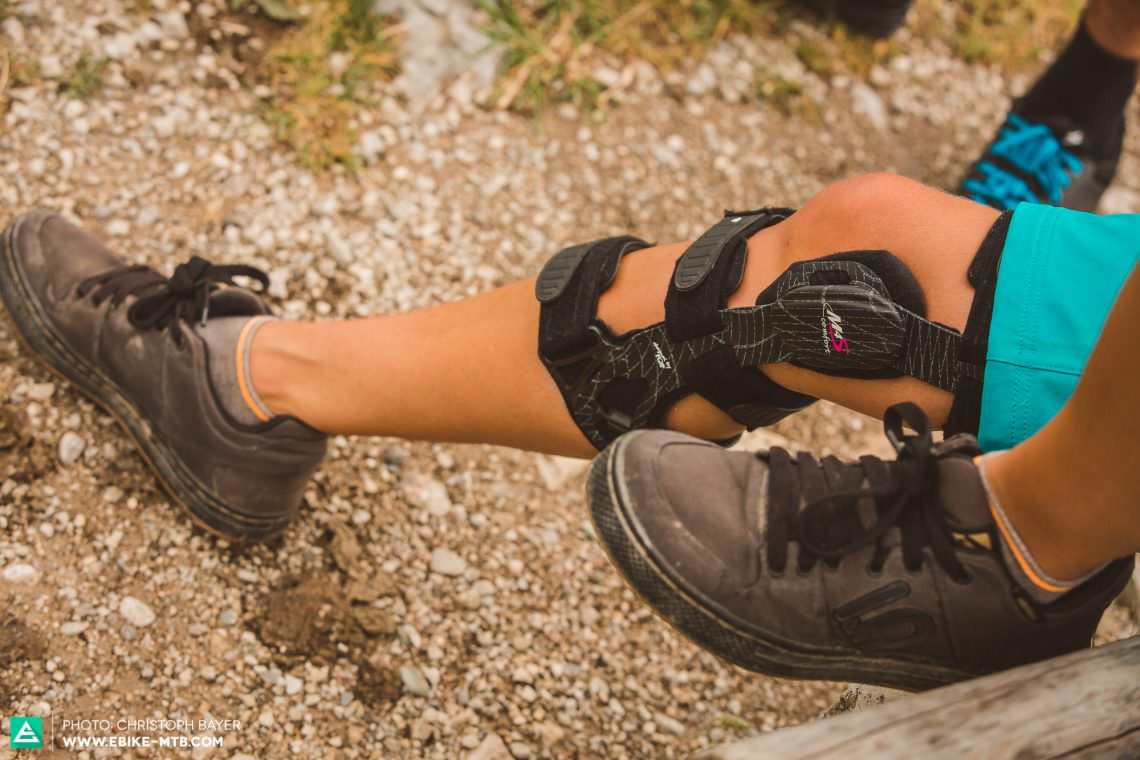
Demolition site! After crashing out while skiing, rehab is next on the cards.
What happened / the diagnosis
My knee injury had been caused by an accident while skiing at the start of January. The diagnosis was a ruptured ACL, torn MCL, ripped meniscus, and a fractured tibial plateau. The prognosis was ten weeks for the break, and a lot of hope that the MCL ligament and meniscus would heal themselves. The long wait paid off; the fracture and the ligament were intact once more. Now, ten weeks later, there was nothing stopping the ACL surgery from going ahead.
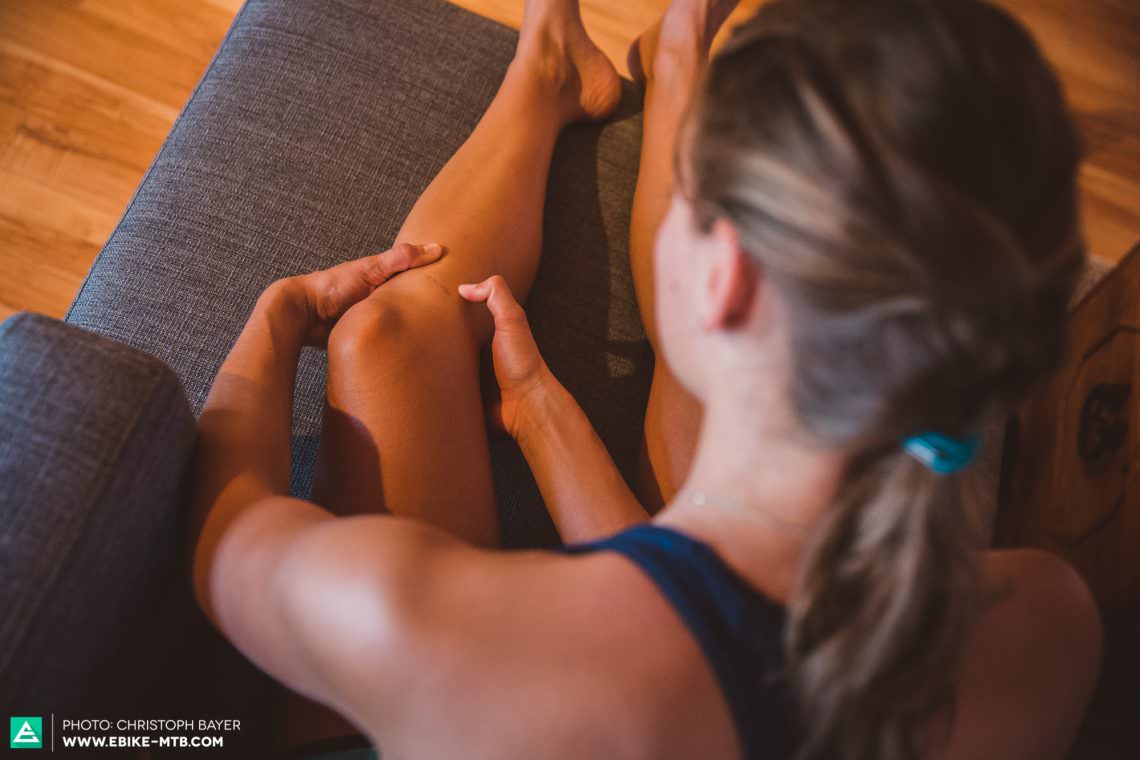
The early days marred with disillusionment
The first six weeks after the surgery pass by, and I know the knee is making progress. I get the all-clear to ride a bike again – but there’s a catch: I can’t put any real pressure on the pedal. Whatever… I’m still stoked and start dreaming of being back in the mountains and seeking out the coolest trails, be it the ones around the local Chiemsee climb at home in Bavaria or other nearby routes. Riding on off-the-beaten-path trails is the ultimate way to explore new places and indulge in the winning combination of adrenaline and unspoilt nature. I find myself dreaming of the sorts of rides that’ll see me shoulder my bike for sections, hauling it for hours at times – especially if it’s because I’m doing the loop around Mont Blanc.
But enough of the dreaming; I was in a situation where I couldn’t ride against any resistance, but it’s not easy to avoid climbs. Even living in a mountain-free region like I do in my village Prien, it doesn’t mean that the landscape is automatically pan-flat. On my first ride back on the bike, I end up taking an underpass under a railway.
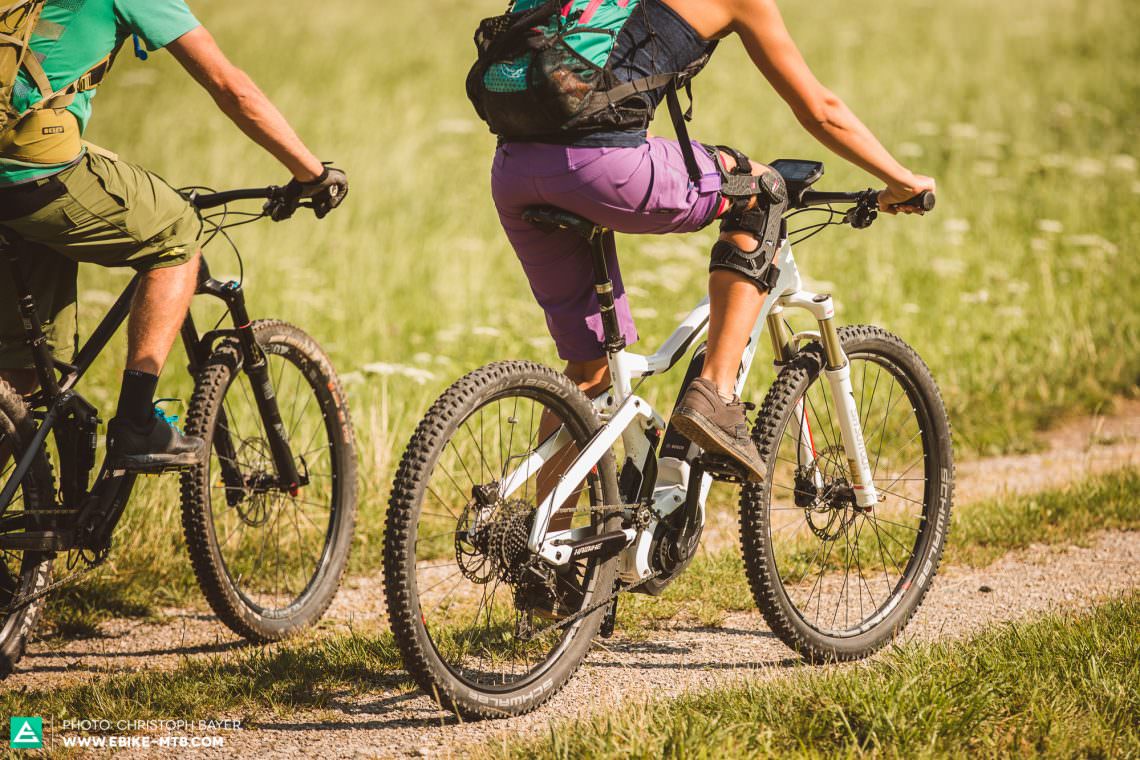
The solution – an E-MTB
One evening I’m struck by the idea of getting an E-MTB. My dad is a long-term advocate and constantly harps on about the benefits of his E-MTB, and I’m lured in by the thought of simply pressing a button to avoid having to get off the bike each time I encounter a small incline. The more I think about it, the more I like the idea of ‘E-MTB rehab,’ and so I start working out how I can document my progress. I pick a Haibike XDURO FullSeven 5.0 with a Bosch Nyon display as the tool for my research.
For my first few rides I keep to the flat, looping around the lake and making the most of feeling the wind on my face once again. I start building up – first just the duration of the rides, then the gradients of the climbs. After a few weeks I get to look down from the mountain towards the valley floor, taking in the familiar view over the boats on the Chiemsee lake. The sun is beating down and the trees next to the mountain huts are swaying a little in what feels like a celebration; I wonder if this is what freedom feels like again.
E-mountain biking doesn’t just have physical benefits – it’s also food for the soul!
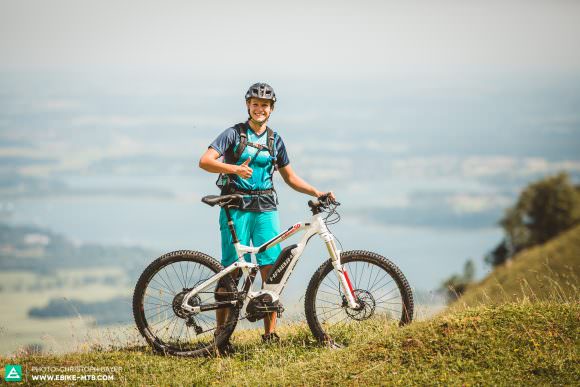

By using the Nyon display, I can build a picture of my rehab by tracking the watts I’m pushing. At the beginning I ride with just 45 watts and I’m reliant on sport and turbo mode. After a week I crack 80 watts and I’m met with the praise ‘high training effect’ on the display screen. As I break a smile, it strikes me as ironic. When I’m in the gym I’ve never understood those who are focused intently on the screen in front of them, calculating how many calories they’re burning and the like. I now realise, however, just how motivating these little figures can be. It feels even better when I’m able to go on a ride with friends – it might be five months after the crash, but I remind myself it’s only seven weeks after the ACL surgery.
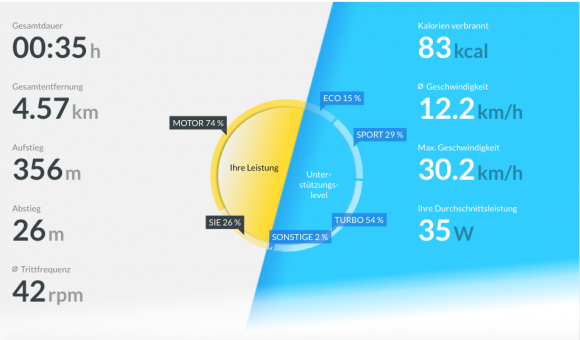
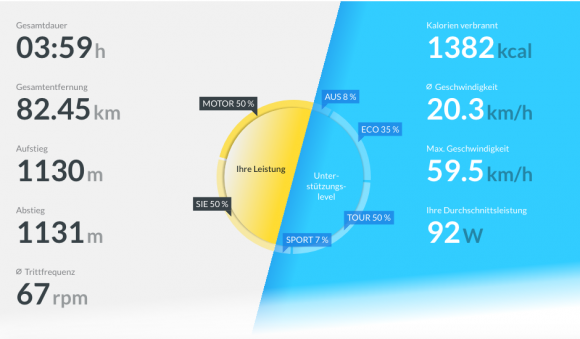
Naturally I’m still going through a more conventional phase of rehab at a clinic, but I’ve switched the static gym bike warm-up for my E-MTB, which means I arrive in a much better mood.
In just seven weeks, my fresh-from-surgery knee has ridden more than 800 km and climbed more than 15,000 metres on the Haibike. Week after week, I’m able to increase the numbers of watts I’m riding without any undue concern. My right leg is still noticeably less muscular, but it’s slowly regaining some power. Riding the E-MTB isn’t just a way for me to focus my rehab and training, but it also comes with another major advantage: it’s a way for me to clear my head and de-stress.
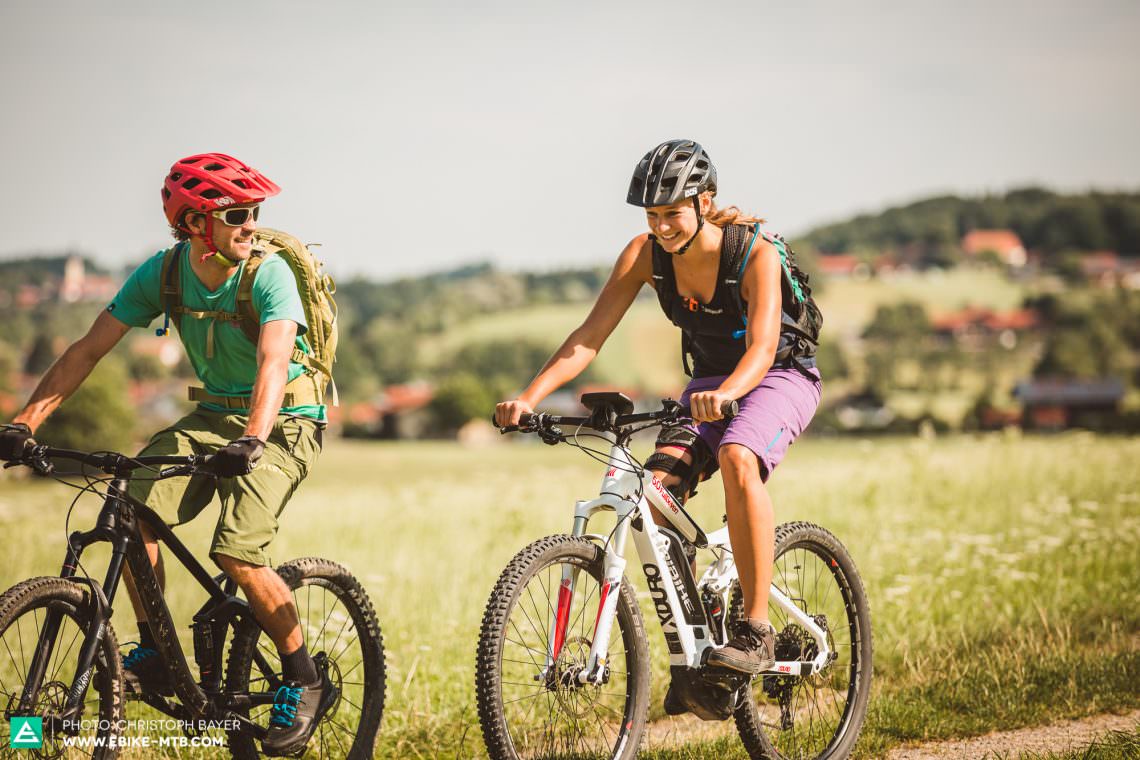
Even though winter came to a premature end, I’ve still been able to make the most of spring and summer. Despite being relatively fresh from surgery, my knee hasn’t stopped me from scaling mountains and enjoying amazing times with friends. I’ve admittedly had to switch trails for more cautious gravel fire roads, but I’m confident that I’ll soon be back on the trails. Plus, given the more confidence-inspiring and stable handling of my E-MTB, it’ll probably end up being easier than with a conventional mountain bike!
Did you enjoy this article? If so, we would be stoked if you decide to support us with a monthly contribution. By becoming a supporter of E-MOUNTAINBIKE, you will help secure a sustainable future for high-quality cycling journalism. Click here to learn more.
Words: Anne Zettl Photos: Christoph Bayer









